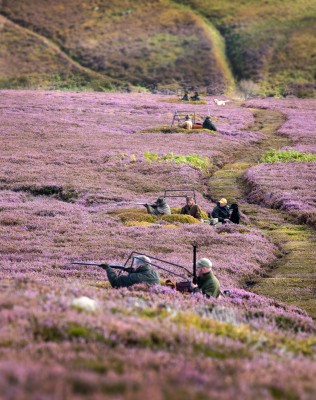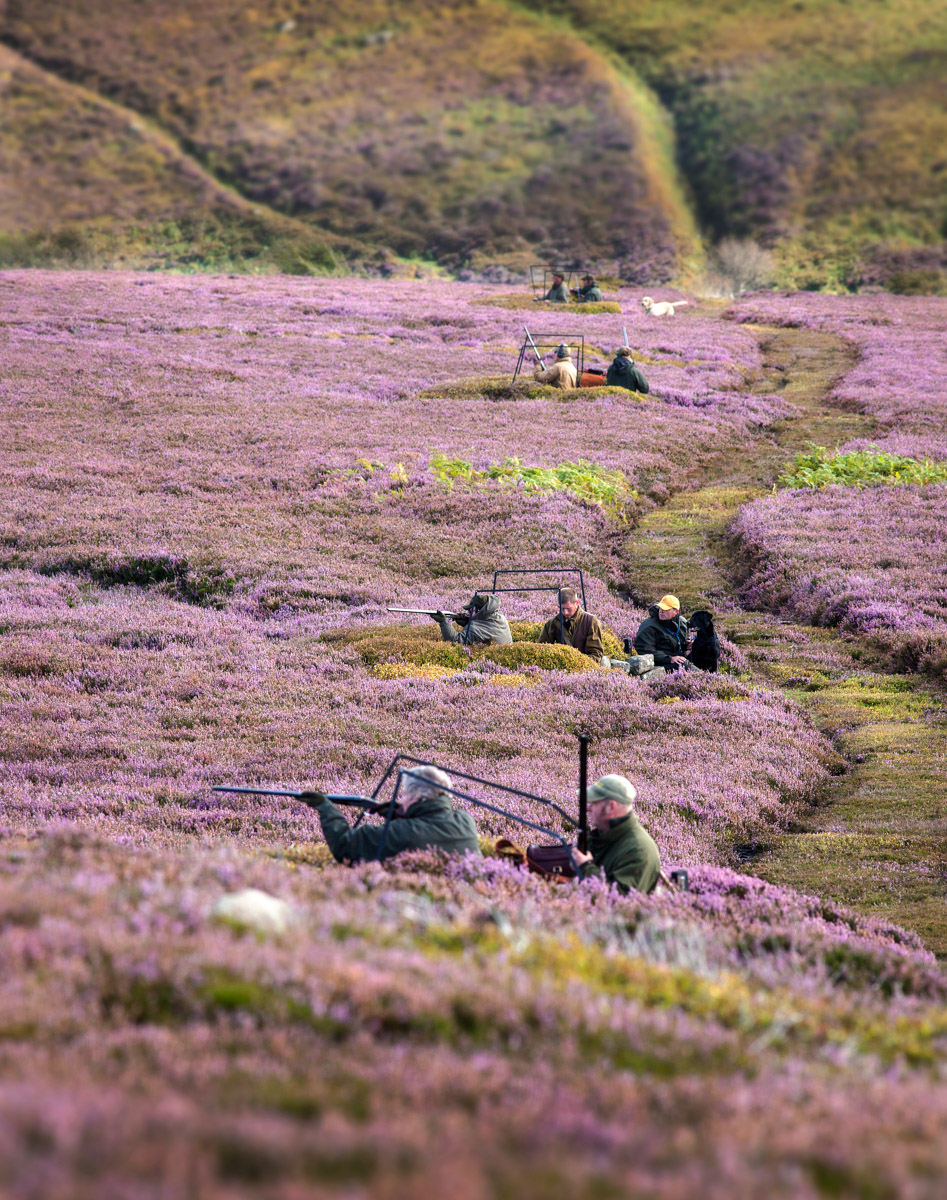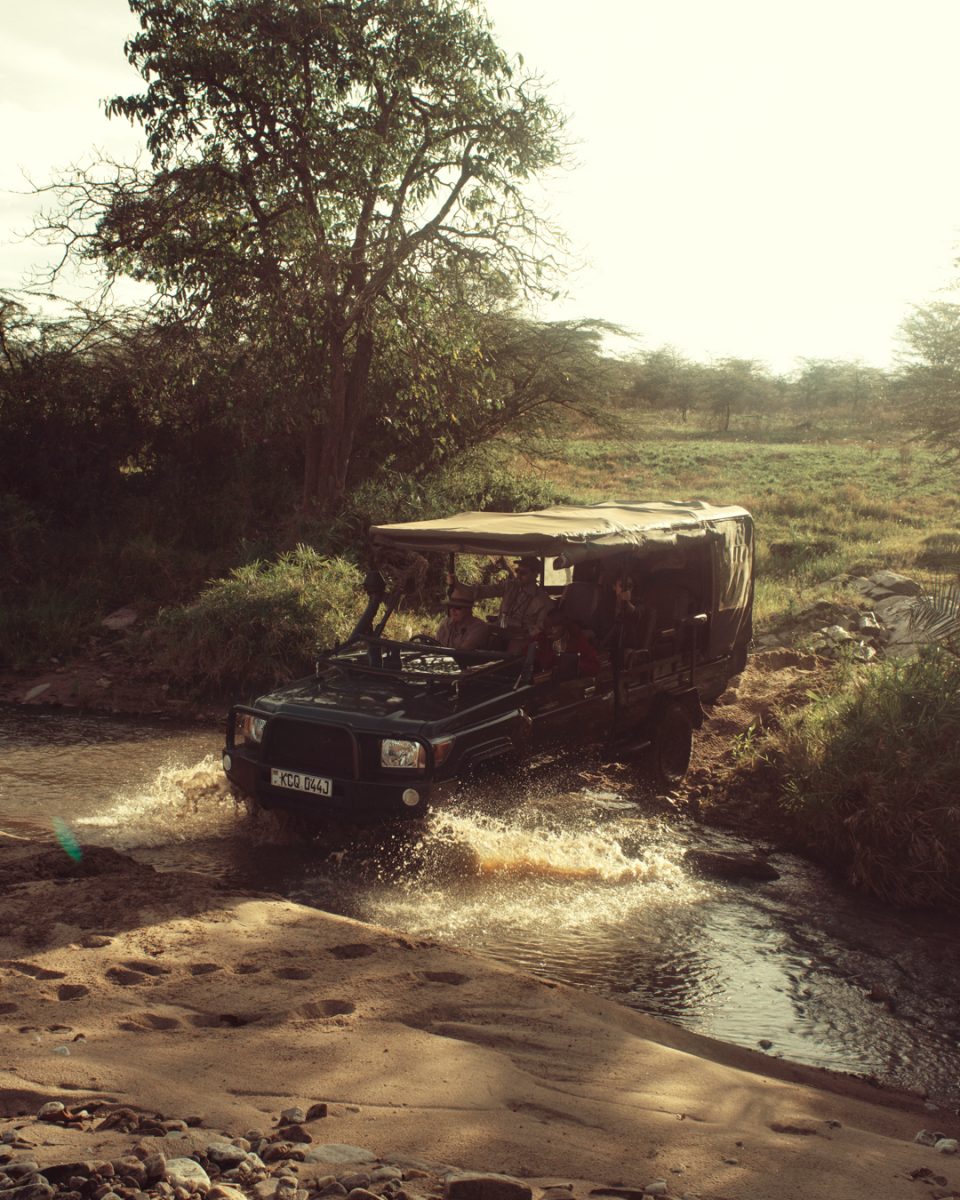Grouse shooting has been a cyclical business for generations and that was part of its attraction. You never knew from one year to the next whether it was going to be good or bad, largely because of the Strongyle worm. This worm thrived when Grouse numbers were high, but consequently when they caused a crash (often called the 7-year cycle), the lack of hosts being the Grouse themselves, enabled the worm to die away and hence the whole process of rebuilding host numbers could occur. Higher, wetter Moors which are often the most prolific for Grouse because of abundant insects in the right years, were particularly badly affected by Strongyle worm which loved the moist ground conditions.
Although medicated grit (which is literally a piece of Cornish quartz grit coated with a worming agent which cleanses the gut of the Grouse of Strongyle worms) has been around for over 30 years, it was only about 7 years ago that developments occurred which allowed a much more effective medicated grit to be produced. This has undoubtedly led to the phenomenal Grouse numbers in recent years, with record after record being broken on Moors up and down the country. Even the Scottish Moors which have been in the doldrums for many years, have shot some phenomenal bags over the last two or three years.
Added to the major breakthrough in the effectiveness of medicated grit, which has allowed much larger quantities of Grouse to be overwintered i.e. left on the Moor at the end of the season, leading to many more pairs of Grouse breeding the following spring, has been the very significant improvements in Moorland Management largely as a result of investment by new rich Moorland owners. This has included the employment of many more Keepers, the purchase of better machinery, reducing sheep numbers and improving the acreage of heather capable of hosting and feeding Grouse as well as a better understanding amongst all concerned of how to optimise Grouse numbers. The end result has been a bonanza in recent years which have probably comparable to the heyday of Grouse shooting back in the 1930’s. It is worth noting then that there were far more Moors in existence than now, with driven Moors even being present in Wales from the North Coast almost down to Cardiff itself. Indeed the record day’s Grouse bag on a Welsh Moor was at Ruabon in August 1912, when 887 brace of Grouse was shot. The tragedy is that there are now no “proper” driven Grouse Moors left in Wales and indeed a paucity of bird life over much of Wales, due to uncontrolled vermin levels.
The question that was constantly asked at the recent Game Fair held in Yorkshire, was why this year it has all gone so wrong for the Grouse over so much of England and Scotland. We have got used to simple answers even for complex questions and surprisingly despite the amount of time, effort and money that goes into producing the Grouse we love to shoot, we still know remarkably little about why they do well or badly. Weather undoubtedly plays its part and this year it has played a major part. Although the South of England has had a remarkably dry spring and summer, that is not the case with the North of England and much of Scotland. The winter there stayed late and we “enjoyed” incredibly low temperatures at the end of May and for much of June. Temperatures are always significantly lower in elevated places such as exposed Moorland and although the Red Grouse is a sub-arctic bird, it does need some warmth at critical times so as to allow insects to hatch, which form an essential part of the young Grouse’s early diet. The interesting thing is that there is considerable variation in how Grouse in different years can cope with bad weather. In some years, they will do well even when there is prolonged rain, to include at critical times and the chicks are very vulnerable much better than they do in other years. Almost certainly this is to do with the condition of the hen and subsequently the chicks and as a result, if they are in very good condition, they will deal much better with bad weather than if they are not. This is all logical when one considers that if we want hen pheasants to lay many fertile eggs, we feed them with a high quality protein-based layer pellet. With sheep if we want them to have a high lambing percentage, they will be fed breeders nuts and we do not expect race horses to run well if fed on poor quality grass. The problem is that we regard heather as heather, rather than understanding that sometimes the heather plant is much more capable of being a high nutrient food than it is in other years.
My view is that this year, we have suffered from a combination of poor weather over much of the main Moorland areas in the UK and at the same time and for some unknown reason, the birds themselves have not been in first class condition. There is a real likelihood that this has had something to do with the high numbers of Grouse that we have been carrying for quite a few years now and again this is similar to what happens with other high-stocked animal populations. The fact that we have been able to keep alive by use of medicated grit, Grouse that almost certainly would have died in earlier years, may also be playing a part. The worry we have now is that after such a poor summer in our Moorland areas, with little warmth and sunlight, how this will affect Grouse survival over the coming winter and then their ability to lay, hatch and rear good broods next spring. Given the shortage of young Grouse that have survived this summer, we are in desperate need of a really good hatch and survival rate in 2016.
In a way, I am glad that yet again the Red Grouse has been able to confound us, but perhaps wish that it had not so dramatically cut my own shooting days down! This year, will go down as generally one of the poor Grouse years, but I suspect that as a result, we will try harder to fully understand what has contributed to that. The great thing about “Grouse men” is that they have to be optimists and we are now turning our attention to 2016!
Mark Osborne is a Director of William Powell Sporting, one of the main Management and Letting Agents for Grouse Shooting in the UK. www.williampowell.com
Mark Osborne is one of, if not 'the' most successful managers of grouse moors in recent history. I am very grateful for his agreement to write this quick report and share his knowledge for the readers of The Explora.
Simon.




















Neill Clark on August 13, 2015 at 2:14 pm
A very interesting piece, thanks for posting it. For as long as I have been shooting there have been great, good , indifferent and downright bad Grouse years, and the reasons have been much debated. It's inevitable in my view when we are talking about a wild bird as opposed to a reared pheasant or partridge.
I have yet to shoot Grouse, but a day or two on a driven shoot are joint top of the bucket list, along with a day on the hill in Scotland after a Stag. I just hope that when I go for the Grouse I pick a good year.